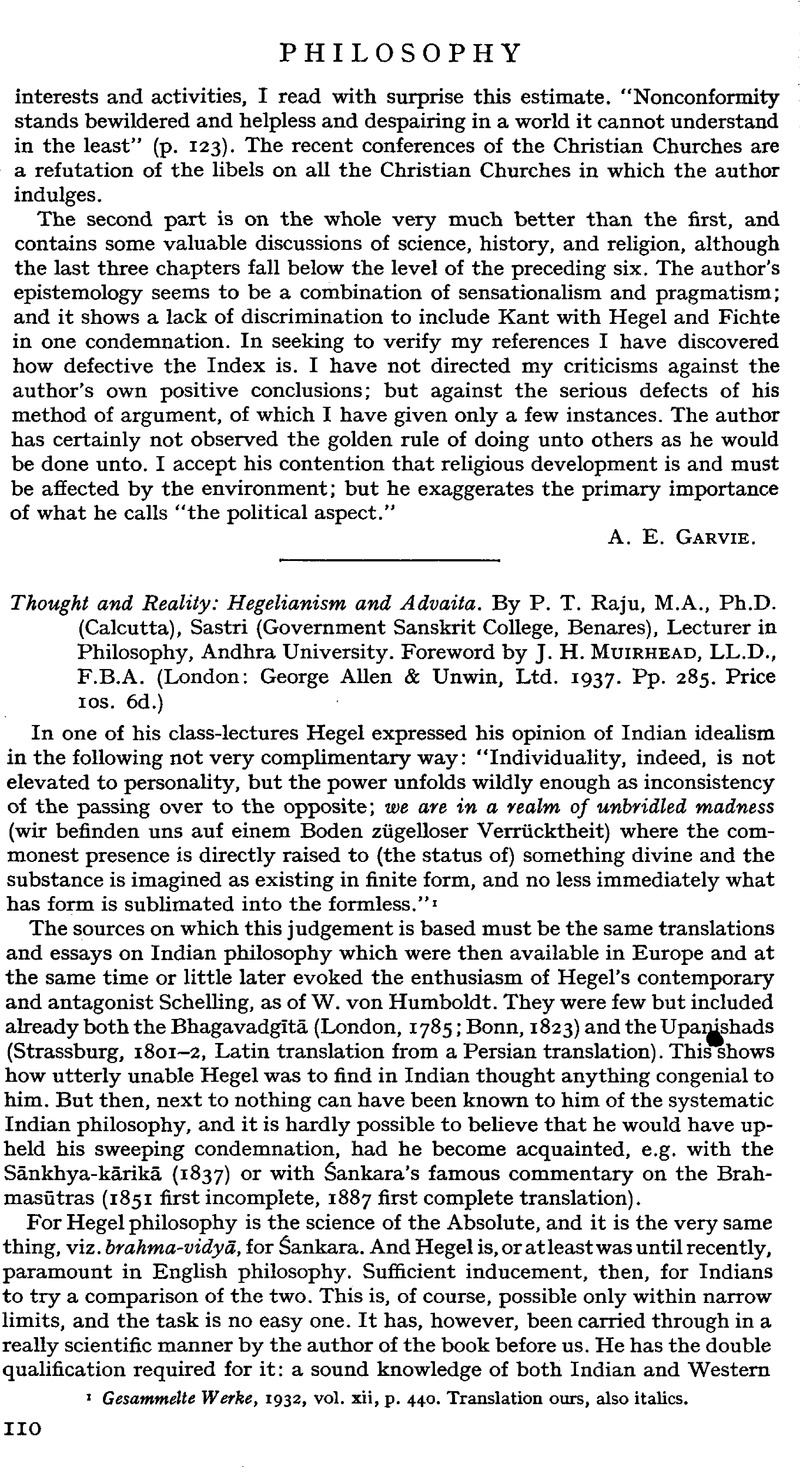No CrossRef data available.
Article contents
Thought and Reality: Hegelianism and Advaita. By P. T. RajuM.A., Ph.D. (Calcutta), Sastri (Government Sanskrit College, Benares), Lecturer inPhilosophy, Andhra University. Foreword by J. H. MuirheadLL.D., F.B.A. (London: George Allen & Unwin, Ltd.. 1937. Pp. 285. Price 10s. 6d.)
Published online by Cambridge University Press: 25 February 2009
Abstract

- Type
- New books
- Information
- Copyright
- Copyright © The Royal Institute of Philosophy 1938
References
page 110 note 1 Gesammdte Werke, 1932 vol. xii, p. 440.Google Scholar
page 112 note 1 Not the former alone, as stated (by an oversight, no doubt) on p. 56 of our book.
page 112 note 2 The exit of the liberated soul from the cycle of births being merely the realization of itsown true nature.
page 112 note 3 “Mass (or Lump) of consciousness” (prajfiana-ghana) is, in the older Upanishads, a description of the Absolute understood as pure consciousness in which subject and object are “unified.”
page 112 note 4 Allgemeine Geschichte tier Philosophie, vol. i, part 2, p. 121;Google Scholar cf. System des Vedanta, pp.145–146.
page 113 note 1 On the Brahmanic view of which there is an excellent little book inspired by James'sVarieties of Religious Experience, viz. Cosmic Consciousness, or the Vedantic Idea of Realisation or Mukti (in the light of Modern Psychology) by M. C. Nanjunda Row (a physician), Madras, 1909.
page 113 note 2 J Cf. the “encaptic” view of Professor Karl Groos of Tubingen, in his work Die Unsterblichkeitsfrage, Berlin, 1936; also Goethe's monadism.


